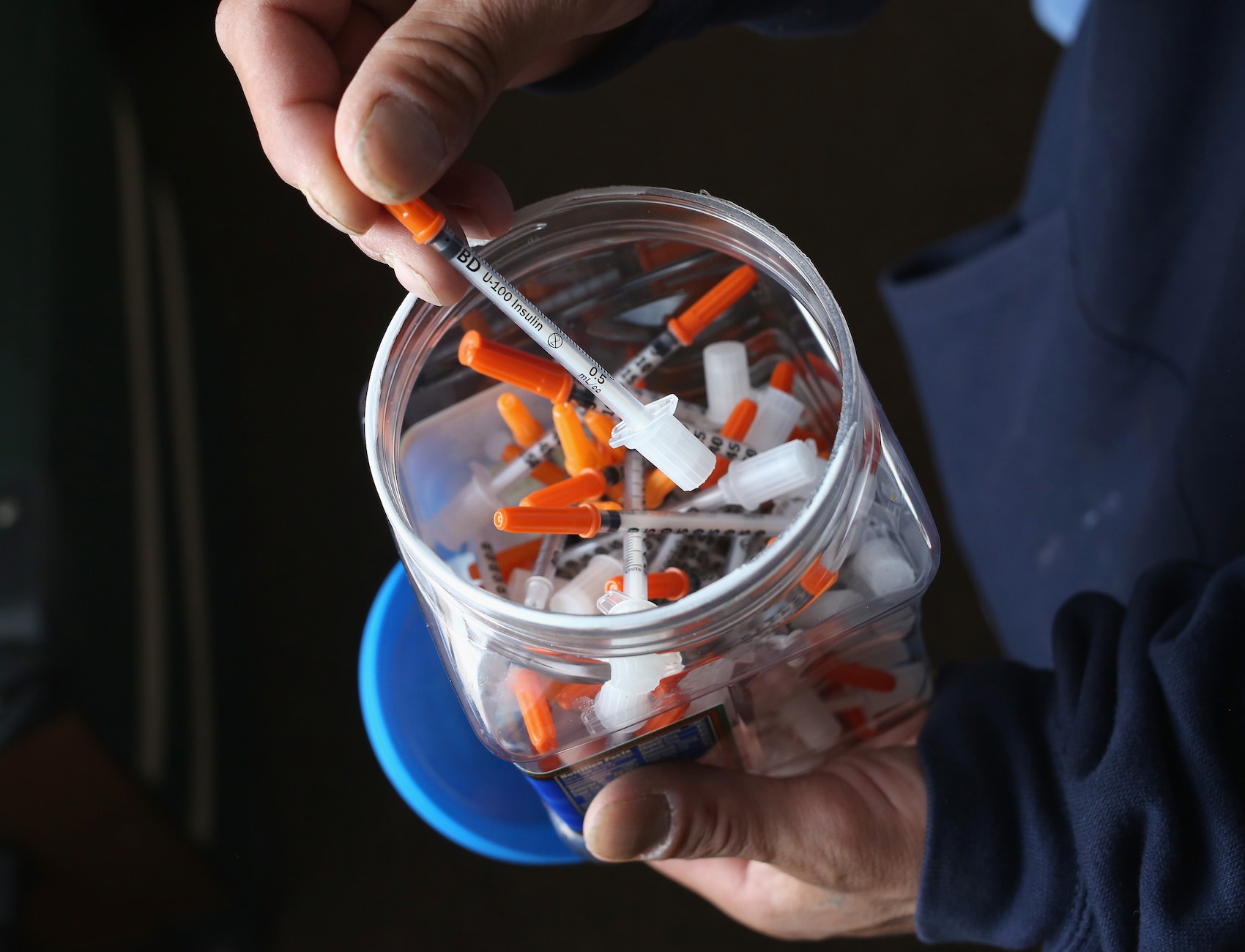How Local Media Should Report on Safe Injection Sites
In a rare case of local media nuance, a Boston TV news station provided a humane and health-focused segment on safe drug use.

The public’s perception of crime is often significantly out of alignment with the reality. This is caused, in part, by frequently sensationalist, decontextualized media coverage. Media Frame seeks to critique journalism on issues of policing and prisons, challenge the standard media formulas for crime coverage, and push media to radically rethink how they inform the public on matters of public safety.
As the city of Boston continues its debate over the potential use of safe injection sites for drug users—similar to ones already in use in Europe, Canada, and Australia—local media have too often shown how not to report on the issue.
One August story, from WCVB Boston, focused on the superficial political back-and-forth instead of public health issues. We heard from Boston City Council member, Annissa Essaibi George, who visited safe injection sites in Vancouver, and called them “a disappointment” and not “very encouraging [to her].” The piece then turned to Boston Mayor Marty Walsh, who appears sympathetic to those with substance use disorder, but veered back to U.S. Attorney Andrew Lelling, who told the station he can’t “envision any scenario” where safe injection sites would be “off limits” to federal law enforcement. The segment is a thin snapshot of the issue, more concerned with political feasibility than with addressing a public health crisis.
Like WCVB, WBZ CBS Boston relied on the perspective of law enforcement for a July report on safe injection. The brief segment, “Prosecutor: Feds Won’t Recognize Mass. Supervised Injection Sites,” began with an anchor telling viewers that “the U.S. attorney is already warning lawmakers that their idea is illegal.” The segment cited no data and features no public health officials, who, if interviewed, would have noted that a 2014 systematic review of dozens of studies found that safe injection sites reduced overdoses, reduced outdoor drug use, didn’t lead to crime increases, promoted safer injection conditions, and had no negative effect on crime.
But a different approach to opioid coverage and harm reduction is possible. A Boston 25 segment from last year did something unusual for TV news: It gave a humane, nuanced breakdown on drug policy with a focus on harm reduction and science-based claims, citing public health officials and featuring zero prosecutors or police.
In the story, updated in August, reporter Stephanie Coueignoux and photojournalist Jason Solowski visit a safe injection site in Canada called Cactus Montreal. Coueignoux notes how the use of safe injection sites have reduced public needle-littering, saved lives, and had no negative effect on crime. In lieu of voices often featured in drug stories—police, prosecutors, and tough-on-crime pundits—we hear, instead, from the site’s executive director, a peer worker and former drug user, and a sympathetic local politician.
It’s balanced, nuanced, and frames the issue as a harm-reduction matter, while avoiding moralism and carceral language. The segment is more concerned with educating the viewer than scaring them: Coueignoux begins by pointing out that initially, in 2017, the site “caused a lot of controversy” in Montreal but says once implemented, families feel now “feel safer.” Says Coueignoux: “During the two days we were in Montreal, we didn’t find a single syringe near any of these sites.”
The segment ends with an even bigger rarity in TV news: the voice of a former drug user. Cactus Montreal peer worker Farin Shore spins a common moralistic objection around and explains why it misses the point. “Does it enable?” he asks. “Yes, in the sense that we give them a safe place that is sanitary that has sterile equipment to use. More importantly, what we’re doing in a bigger sense than that is reducing the risks people are taking.” Coueignoux then explains that “peer workers also help connect addicts to outreach programs like housing and treatment options, encouraging them to face their addiction head-on.”
Local NPR affiliate WBUR has also avoided law enforcement rhetoric and crime hysteria in covering the city’s opioid crisis. In January, the radio station ran a sober piece on safe injection that balanced the opinions of health professionals, legal experts, law enforcement, and political players.
The Boston 25 segment is noteworthy because it bucks the trend of local TV news reporting—a genre where fearmongering and pro-police framing is the norm. Of course, it had some flaws. Coueignoux repeatedly referred to people experiencing addiction as “addicts,” which is a stigmatizing term best replaced with people-first language such as “person with addiction” or “people with substance use disorders.” It may seem like quibbling but totalizing labels like “addict,” experts have warned, contribute to broader dehumanization. The segment was also accompanied by an ominous, slightly menacing score, most likely a dramatic—though misleading—addition by the producers.
Still, a local TV news story on safe injection sites and the opioid crisis that is driven by health professionals and data is rare and refreshing. One can report on the issue of drugs without taking cues from prosecutors and police departments, and instead seek out medical experts and social workers more concerned with healing than arresting. Doing so could go a long way in helping the public and lawmakers view the problem not as a crime story, but as what it is: a public health story.
